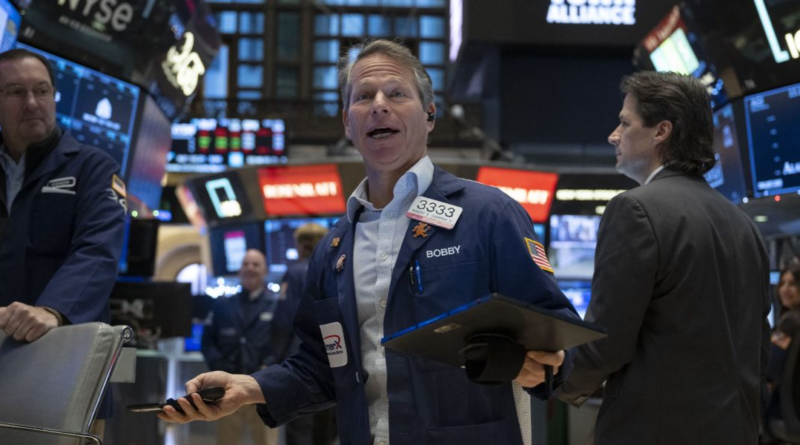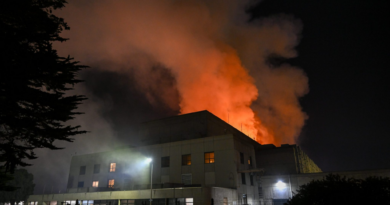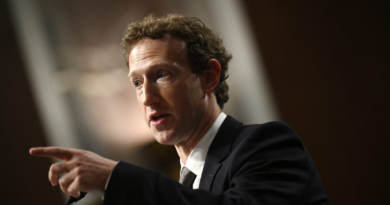Stock forecaster who called 2023's bull run sees 4 'clear and present dangers' spelling 6 months of pain ahead
In 2023, while most forecasters were pessimistic about the U.S. economy and stock market, Ed Yardeni was decidedly bullish. The veteran investment strategist and founder of Yardeni Research argued that fading inflation, a stable labor market, robust earnings, and the rollout of new technologies including AI would cause the S&P 500 to soar more than 18% to 4,600 last year.
It was an optimistic, out-of-consensus outlook that proved prescient—and even slightly too bearish. The S&P 500 jumped more than 24% in 2023 to 4,769 in 2023, to the surprise of Wall Street, and the tech heavy Nasdaq Composite soared 43% to 15,011.
Now though, Yardeni warns the first half of this year might not be so good to stock market investors. He still believes the U.S. is experiencing a “Roaring 2020’s”—when tech innovation, from AI to robotics, will help boost worker productivity and cut business costs, ushering in an age of relative abundance—but there are also four “clear and present dangers” that will likely hold stocks back in the near-term.
“We wouldn’t be surprised if the S&P 500 stalls during the first half of the year and then rallies to 5,400 by the end of the year,” Yardeni wrote in a Wednesday note.
A hawkish Fed
At the end of last year, investors predicting aggressive interest rate cuts in 2024 may have been overly optimistic. Although the Fed’s December Summary of Economic Projections forecasted three 25 basis point rate cuts in 2024, many investors were penciling in five such cuts.
Essentially, as Yardeni explained Wednesday, “the stock and bond rallies since late October might have discounted an easier monetary policy this year than Fed officials are likely to deliver.”
This mismatch in interest rate forecasts between investors and the Fed may lead central bank officials to “start the new year by trying to lower expectations for rate cuts,” according to Yardeni. And any sign that the Fed won’t cut rates substantially in 2024 will surely weigh on stocks as investors have been anticipating a reprieve from rising borrowing costs for some time.
There’s already been some evidence of this trend, with Richmond Fed President Thomas Barkin saying in a speech to the Raleigh Chamber of Commerce that “the potential for additional rate hikes remains on the table.”
‘Partisan paralysis’ and a booming federal deficit
Washington gridlock is another “clear and present danger” that Yardeni is monitoring. Lawmakers will need to agree on 2024 spending targets in the next few weeks, but Yardeni noted that “Republicans and Democrats can agree on fewer and fewer issues” and there is even “paralyzing partisanship within each of the two parties.” That could make for more spending and debt limit drama in Washington this month, which would weigh on stock prices.
Yardeni said he will be carefully tracking “the ballooning federal deficit, led by soaring interest payments on the federal debt” while Washington remains ineffective.
The national debt has soared to $34 trillion amid increased Federal spending in recent years, and Yardeni has long warned that if it rises too high, “bond vigilantes” might take action. The idea is that Treasury buyers will balk at buying the U.S. government’s debt unless they are offered more interest to compensate for increased risks. This would lead bond yields to rise, which is typically bad for stocks.
War in the Middle East
Although the Israel-Hamas war hasn’t yet managed to hurt stock market returns, if the conflict continues to escalate, it may do just that. After Houthi militants attacked cargo ships in the Red Sea, leading the U.S. military to respond and Iran to send a warship to the region, Yardeni said “the Gaza war seems to be turning into a regional war.”
The Red Sea is a critical choke point for global trade, and attacks in the area have led to supply chain issues that could exacerbate inflation. Rising inflation could then force the Fed to hold off on interest rate cuts, weighing on stocks. The good news is, for now, most goods and commodities—particularly oil—haven’t been dramatically affected.
“The conflict and rising tensions in the Middle East have had no impact on the price of oil, which has been weak since last fall,” Yardeni noted. “Supply remains ample, while demand remains weak in China and Europe because both are in recessions.”
China and Taiwan
Finally, Yardeni fears that China’s weak economic growth could hinder stock performance this year in our interconnected global economy. He noted that the country’s manufacturing sector is struggling and there are “signs of deflation and pressure on business profits” that could weigh on global growth, slowing the rise of corporate earnings.
China’s ambitions to invade Taiwan could also throw a wrench in stock market returns, but in a positive twist, China’s economic issues may prevent an imminent invasion.
“A weak economy should cause China’s government to hold off on any planned invasion of Taiwan,” Yardeni wrote. “Nevertheless, Chinese President Xi Jinping on Sunday pledged Beijing’s ‘reunification’ with Taiwan in his year-end address, just weeks before the self-governing island holds elections for its president and legislature.”
There are clearly many risks to stocks on the horizon, but overall, Yardeni believes the U.S. economy will continue to thrive this decade, bringing equities along for the ride.
While the Roaring 2020s has been “a wild decade so far,” featuring a pandemic, a serious bout of inflation, and multiple wars, stocks have continued to rise. “During those four dangerous years, the S&P 500 advanced 47.6% from the end of 2019 through the end of 2023,” Yardeni noted, adding that his “mantra” is now: “We have nothing to fear but nothing to fear.”




